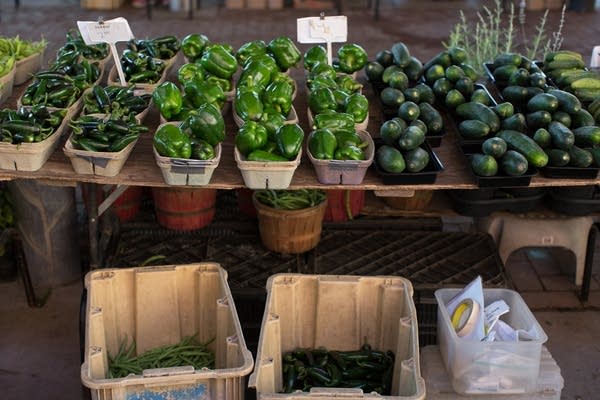Appetites: Hmong cuisine, 'the ultimate fusion food'

The farmers market table belonging to Cha Say Thao and Ma Xiong is filled with jalepeno peppers, bell peppers and cucumbers at the downtown St. Paul market in July 2014. The couple was also selling fresh flowers, beans, peas, greens, herbs and kohlrabi.
Jennifer Simonson | MPR News
Go Deeper.
Create an account or log in to save stories.
Like this?
Thanks for liking this story! We have added it to a list of your favorite stories.


